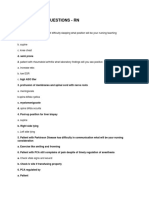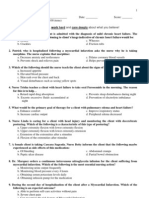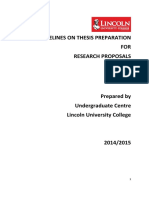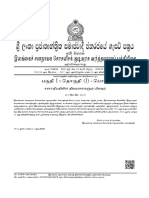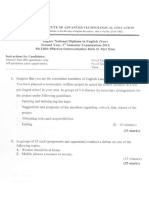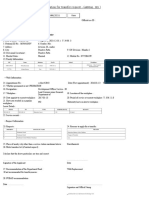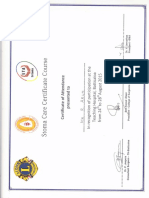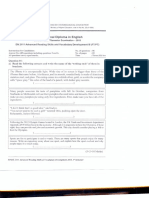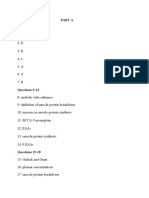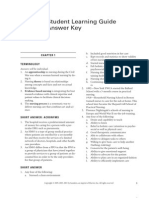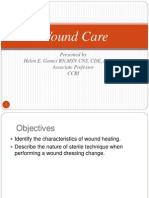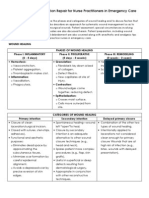60% found this document useful (5 votes)
22K views19 pagesSNB Exam Sample Question Paper 2
This document contains 30 multiple choice nursing questions that assess appropriate nursing interventions for various health conditions. The questions cover topics like caring for patients with pneumonia, spinal cord injuries, central venous catheters, hypertension, diabetes, gastrointestinal bleeds, and more. Selecting the correct nursing intervention is important for safely and effectively caring for patients.
Uploaded by
Ketheesaran LingamCopyright
© © All Rights Reserved
We take content rights seriously. If you suspect this is your content, claim it here.
Available Formats
Download as PDF, TXT or read online on Scribd
60% found this document useful (5 votes)
22K views19 pagesSNB Exam Sample Question Paper 2
This document contains 30 multiple choice nursing questions that assess appropriate nursing interventions for various health conditions. The questions cover topics like caring for patients with pneumonia, spinal cord injuries, central venous catheters, hypertension, diabetes, gastrointestinal bleeds, and more. Selecting the correct nursing intervention is important for safely and effectively caring for patients.
Uploaded by
Ketheesaran LingamCopyright
© © All Rights Reserved
We take content rights seriously. If you suspect this is your content, claim it here.
Available Formats
Download as PDF, TXT or read online on Scribd
/ 19


























